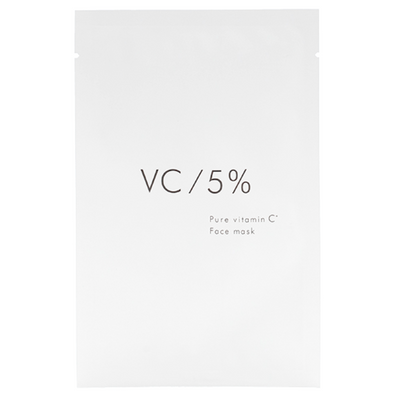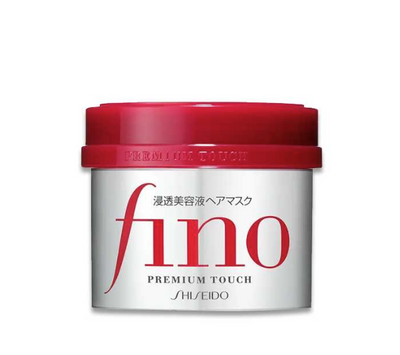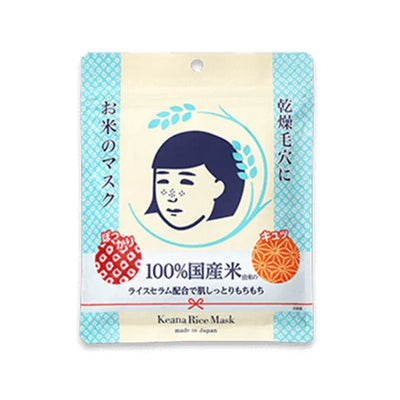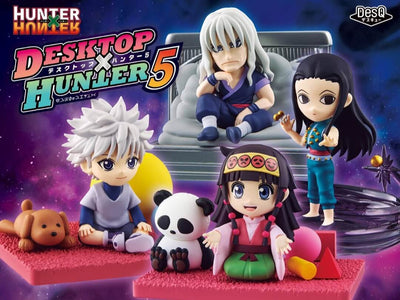Average Reading Time: ~7 minutes
Matcha is exploding in popularity in the Western world, and it’s no wonder why. It has an amazing creamy, bitter, umami flavor that is a unique experience for the taste buds. However, with international popularity comes a few challenges that has led to an issue for Japan. Today, we’re diving into the matcha shortage.
Read on to learn about what contributed to this issue, why matcha is so popular and ways for you to navigate the matcha shortage (and do your part to help)!
About Japan’s Matcha Shortage
Rise in Popularity
If you’ve been on social media, you’ve probably seen more and more videos mentioning matcha over recent years, just one sign of the rise in people downing matcha worldwide.
Part of this, some believe, is because of the pandemic. People were looking for natural ways to boost their immune system and found a solution in matcha, which is packed with antioxidants.

That's right. This tiny cup of green goodness is great for maintaining your health! Image via Freepik
It also gained popularity as an alternative to coffee as it still has caffeine, but not enough to cause the same jitters that some get from coffee. Plus, matcha can be used in many forms, such as in lattes, cakes, noodles, smoothies and more—making it popular for cooking as well as drinking!
So even though matcha popularity was on a very slow decline in Japan, it has found a very enthusiastic reception overseas and a huge boom in demand.
Slow & Seasonal Production (Growth, Seasonality, Stone Mills)

Can you guess how long it takes to transform tea leaves into this silky powder? Image via Freepik
So what if matcha is more popular? Isn’t that a good thing. Well, yes! However, combine it with the seasonality and time-consuming production of matcha and you have a big issue.
The leaves used to create matcha are known as tencha, which is grown in the shade. The thing about tencha is that it’s only harvested in the springtime. The high-chlorophyll “ceremonial” type of matcha that people seem to be falling in love with is particularly seasonal as it’s the first flush of the year's harvest.
In fact, the only reason that you’re able to enjoy matcha year-round is that the leaves are dried, preserved and are strategically released throughout the year.

You read that right—tencha, which becomes matcha, has to be grown under shade. Image via Instagram (@osada723)
What even further contributes to the shortage is how long it takes to turn the dried leaves into a powder. This process is performed with a stone mill that’s carved in such a way that it will grind the leaves into a fine powder without creating heat damage.
Want to know how long it takes? At least one month! And to meet demand, you need a lot of stone mills! This means that you can’t really just make more matcha willy-nilly. It takes a lot of planning to line up the season, save enough for the year, dry the leaves and to create the matcha powder.
The Amount & Size of Farms

Plenty of families have passed down the secret to growing tea, but unfortunately, not enough. Image via Instagram (@oishiteafactory)
The thing about some of our favorite plant-based treats and drinks is that you need someone to grow the plants. Generally, in Japan, the growers are family-run farms that have been around for generations.
However, as Japan urbanizes and young people go to study in the cities, Japan is seeing lots of young people choosing to stay in urban and suburban areas. This translates into more and more farms closing down due to having no one to pass them onto.
Also, the profit made from growing tea isn’t that high. That means that there are a lot of farms closing and/or a lack of successors due to just how difficult it can be to get ahead of production costs.
In fact, the number of matcha farms dropped from about 54,000 in the year 2000 all the way to 20,000 by 2015.

Even growing your farm to the point where everything is fully ready for harvest can take a few years. Image via Instagram (@flyfisher7311)
Also, many of the farms for matcha aren’t as big as you might think. While space isn’t necessarily an issue, a farm would require shade coverings for their matcha and more staff, which means having to pay upfront for all of that.
What all of this means to you
Well, it’s plain and simple. It’ll be harder to get matcha over the next few years. Japan is working to offer subsidies to farmers so that they can expand their farms, increase matcha production and hopefully make the industry more attractive financially. However, the process is most likely going to take five years according to some estimates.
But don’t worry. There are still ways for you to not only enjoy matcha and matcha products while also helping to alleviate the issue a little. Here are ways to both enjoy green tea and do your part until Japan figures it out!
How to Navigate the Matcha Shortage
Know the grade and buy accordingly

While all green tea is made equal, certain matcha is better suited to drinking while others are better suited to this matcha tiramisu. Image via Instagram (@matcha_aya)
While the “grade” system is somewhat nonconcrete, it’s a good place to start. But why do we bring up the matcha grade system? Well, because a lack of knowledge about matcha quality and flavor profiles is actually leading to a lot of “wasted” matcha.
Ceremonial matcha has the highest amount of chlorophyll, giving it that iconic, thick matcha flavor, which is why it’s most often meant for tea ceremonies. This type is meant to be drunk in the traditional style with a relatively small amount of water (about 60ml for 2g of matcha powder). That’s it.
One of the biggest mistakes foreign tourists make is they use ceremonial grade for matcha lattes, smoothies, cooking or watered-down green tea. And while we love all of those things, ceremonial isn’t the right option and is kind of a waste, especially since the flavor is so strong that it doesn’t really blend with whatever is mixed with it.

Tip: Ask shopkeepers which teas they would recommend for lattes, cooking, or whatever. They'll get you on the right track! Image via Freepik
Opt instead for what is called “premium matcha” (also known as daily matcha) or culinary matcha. While these “grades” seem like you’re sacrificing quality, the truth is that you’re not. These are grown in such a way that there is less chlorophyll, meaning that they have (generally) a milder taste that blends much better into whatever you add it into.
This means that you can drink it traditionally on its own or in lattes or smoothies as well as use them in cooking! Knowing the difference—or even better, asking the staff (even with a translator app)—will help you to get the type of matcha that fits your needs!
Avoid buying in bulk (and resale)

While you may want to make hundreds of matcha rolls, tea and more, avoid buying in bulk. Image via Freepik
While many shops are setting purchase limits for customers, some are not quite ready to implement them. That doesn’t mean that you should buy as many cans as you can. First of all, with such limited supply, you’re sure to be ruining several people’s day by taking all of the matcha.
But possibly more convincingly, you probably won’t even be able to fully enjoy the matcha before it hits its best-by date (as in the date that ensures the best taste). That means that, if you try to bulk buy, you won’t be enjoying the same quality from start to finish.
Also, buying for resale is not appreciated by most shop owners. Usually, matcha shops go through a lot of negotiations to procure matcha powder or to procure the leaves to make their own matcha powder. So, shop owners really don’t like people bypassing that to resell it. (Don’t worry—MiauMall sources all of our matcha directly.)
Consider Matcha-Adjacent Teas

Sencha is one of the most refreshing green tea options during the hot Japanese summers. Image via Instagram (@mye_blend_tea_atelier)
We get it—matcha is the king of teas in Japan. However, there are other teas out here that are grown in different conditions or treated differently for a unique yet delicious flavor. Let's take a look at two alternatives: sencha and hojicha! (Actually, there are so many tea types unique to Japan, but these are two of the most popular.)
Sencha is grown similarly to matcha but they are unshaded much earlier for a much lighter flavor. It also uses whole tea leaves in brewing as opposed to matcha’s powdered leaves. It’s actually the most produced and consumed version of green tea in Japan.
It’s a great alternative to matcha, especially for those who tend to enjoy a lighter (or watered down) matcha anyway.

You can find hojicha at almost any matcha shop or even at specific hojicha-specialty shops like Hoho Hojicha! (And their hojicha sweets set is amazing!) Image via Instagram (@hohohojicha)
Hojicha is also a great option to get your hands on and is also increasing in popularity outside of Japan! This alternative sees the green tea leaves roasted over high heat until they become a reddish-brown.
This tea variant is famous for its nutty flavor with a bit of smoke and sweetness to it. Hojicha is great for those who want a low-to-no bitterness experience, and it tastes great in a latte or in sweets!
Shop more than just Uji

Shizuoka is known for two things in Japan (mainly)—Mt. Fuji and green tea! Image via Freepik
Uji is the capital of green tea for Japan (and much of the matcha-loving world). Many of the Uji tea growers and producers take a lot of pride in their work and the tradition behind their craftsmanship, which is great!
However, Uji (and official Uji-affiliated green tea makers) aren’t the only sources of green tea from Japan. There are several regions that produce matcha, and due to their climates and processing methods, have different flavor profiles.
Fukuoka, Shizuoka, Kagoshima, Aichi and other prefectures all grow the same style of green tea, with Shizuoka being the largest producer of green tea in Japan!
And while some of these prefectures are better-known for producing sencha, they also provide amazing matcha options that are just as good. Buying some of these alternatives (in combination with Uji matcha) can help to alleviate some of the strain on the Uji tea-growing industry!

So now that you know how to tackle the problem, all that's left is to enjoy! Image via Freepik
So while the matcha shortage is probably going to last a few years, we hope that you can use some of these tips to get your green tea fix!









